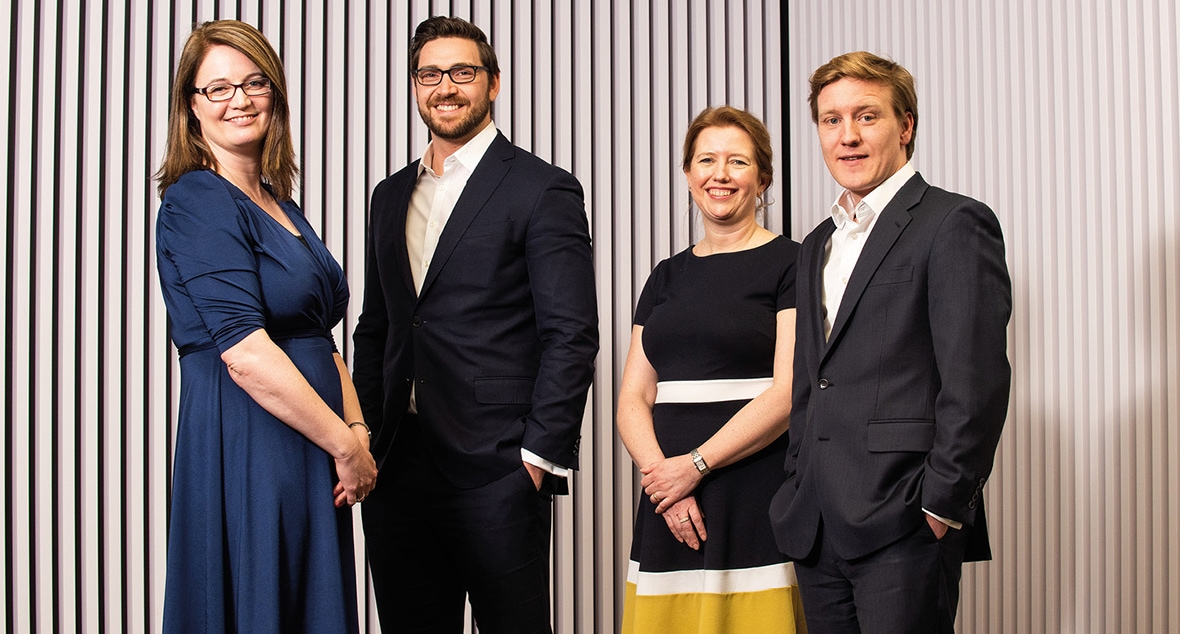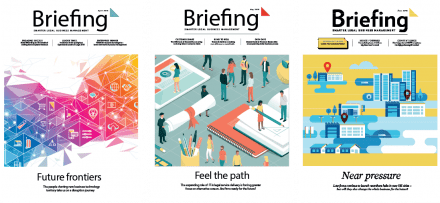Tech-in together
Jem Sandhu speaks to some of the key players with a part in the new digital law group launched by Herbert Smith Freehills.
Transformation has never been easy, with digital transformation having an even lower success rate than the traditional variety. Nevertheless, the competitive benefits promised by capitalising on emerging technologies has elevated digital to the board level.
“Technological innovation is providing clients with opportunities to generate revenue, increase cost savings, and create new sources of value and new business models,” says Alex Cravero, an IT and sourcing lawyer at Herbert Smith Freehills. But he has also seen this trend create new technical, operational and regulatory risks.
Team in formation
Clearly, clients increasingly need their lawyers to go beyond providing traditional legal advice. And this was precisely the thinking behind his firm’s new digital law group (DLG) – formally launched in November 2019. Currently at 28 members across eight global offices, the DLG works hand in hand with HSF’s lawyers across the business to advise clients on their digital transformation initiatives – from digitisation to data analytics, blockchain and smart legal contracts.
The UK team is co-headed by Cravero and Charlie Morgan (an international arbitration lawyer) as joint digital law leads. The DLG also works very closely with Cathy Mattis (head of legal operations, client solutions) and Fleur Kitchingman (head of client and technology solutions, ALT [alternative legal services]) in its work. Cravero describes a closely knit, cohesive, unit: with three distinct functions – the digital law group, alternative legal services, and legal operations – working together to solve the legal, technical, operational and strategic elements of a client problem.
“From the client perspective, there are a lot of things to be considered in addition to the legal problem – such as legal project management and technology. But it’s difficult for client teams to know which of those things you need to solve your particular problem. This group helps to solve that problem for them,” says Kitchingman. The ALT team at HSF was formed in 2011 to deliver both project-based and business-as-usual work for clients – and specialises in developing legal service delivery solutions.
And taking a client focus is nothing new for Mattis’s legal operations group either. In 2018, the function moved to align itself with how HSF’s clients were organising themselves. “Legal project management, pricing, process, innovation, automation, data analysis, strategic research – it was all pulled together under legal operations,” says Mattis, identifying some of the essentials of a joined-up approach to advising on digital transformation.
Read the full feature in Briefing May – It’s the screen team, here.
TAKE TRAINING SERIOUSLY
The International Bar Association report Us Too?, launched in May 2019, highlighted widespread bullying and sexual harassment in legal workplaces.
“For the first time at a global level, this research provides quantitative confirmation that bullying and sexual harassment are endemic in the legal profession,” stated the IBA president. The report involved 6,980 respondents, from 135 countries, across law firms, in-house, barristers’ chambers, judiciary and government. It reported that bullying is rife in legal workplaces, affecting one in two female respondents and one in three male respondents. Bullying and harassment also impact on retention rates: employees leave organisations following these negative experiences.
Surprisingly, the report found policies and training don’t appear to be having the desired impact globally. Respondents at workplaces with policies and training are just as likely to be bullied or harassed as those at workplaces without. In the UK, however, this was not the case: “Legal workplaces in the UK have been early adopters of anti-bullying and sexual harassment policies, with 79% of respondents indicating their workplaces had these policies in place (53% globally).” In addition: “British legal professionals at workplaces with policies in place experience considerably less bullying.
Operate policies in a timely manner so staff can see those who raise concerns are treated with respect and their concerns are addressed
There is also a link between workplaces running training and less bullying and sexual harassment occurring.” This is heartening, and chimes with our experience advising clients, from FTSE 100 companies to professional services firms, asset managers and more: those organisations that put in place clear policies and invest in training, have more positive workplace cultures, supporting dignity at work.
The report sets out a number of recommendations in addition to revising and implementing policies and standards, including gathering data with an end to improving transparency, exploring flexible reporting models and offering regular, customised training.
But what do you need for effective training to prevent bullying and sexual harassment?
Senior leadership has an important role to play in setting the right tone and culture of the organisation, but commitment must flow down. Training is a powerful tool for engaging staff in the role they have to play in maintaining a company’s values. Involving employees in the drafting process can heighten sense of shared ownership. Also, ensure good communications on the company intranet, or through management briefings, to make people aware of the ways they can raise issues. And use policies as a tool to educate staff and management about impacts to drive behavioural change in the workplace. It is important that people understand the seriousness, and for them to moderate their behaviour as necessary. It is well known that bullying and sexual harassment can impact mental health.
Finally, operate policies in a timely manner so staff can see those who raise concerns are treated with respect and their concerns are addressed. It’s important that the policies are seen to be applied and appropriate action taken. Keep policies under review so they can evolve, and ensure tailored training is run regularly, championed by leadership.
This article can be found in Briefing’s October edition: Buying signals









